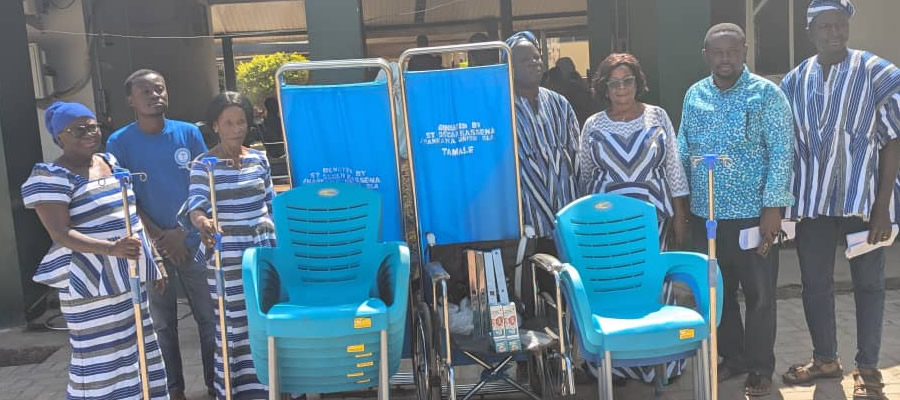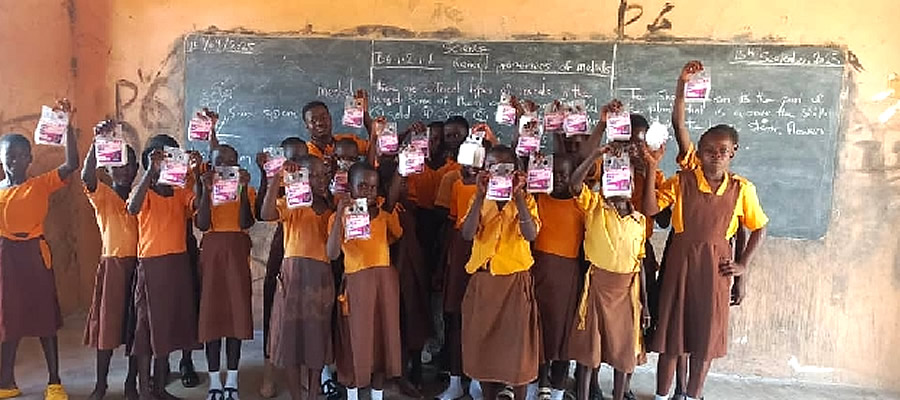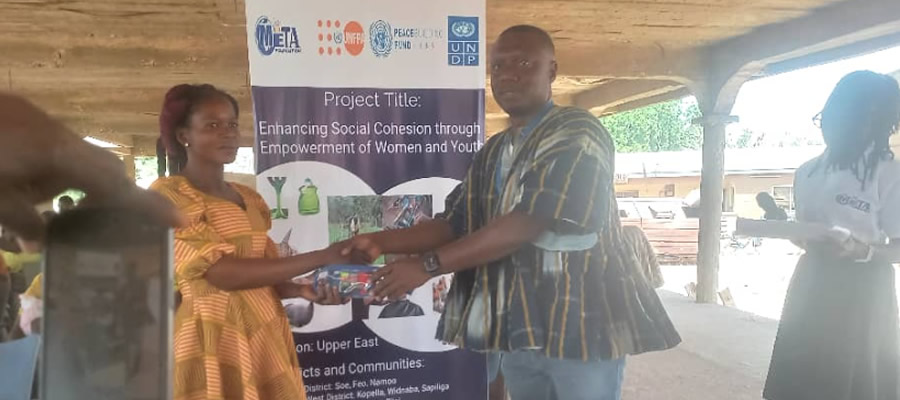
Waste Disposal
Solid Waste
The information refers to the method of collection and disposal of solid waste (rubbish) generated by the households. The method of rubbish disposal is categorized as “collected” where the solid waste is collected by authorised or self-appointed agents (e.g. Zoomlion). “Burnt by households” implies that the household disposes of the solid waste by burning it either inside or outside the dwelling unit, and “buried by household” is the situation where the rubbish is buried inside or outside the dwelling unit. Disposal at a Public Dump (container) refers to the situation where the household carries the waste to a designated place that has a container and public dump (open space) refers to the situation where the household disposes solid waste at a locally designated dumping place.
When the household disposes of solid waste indiscriminately in the bush, along streets, at abandoned or uncompleted building sites, the method is categorized as “Dumped Elsewhere”. All other methods of disposal are put in the category “other”. Table 12.15 shows that the main means of solid waste disposal in the Region is dumping at public dumps (open space 31.2% and container 7.9%). An additional 25.0 percent burn and 6.9 percent bury solid waste.
Almost fifteen percent (14.6%) of households dump waste elsewhere, which is unsatisfactory. Only about one in ten households (11.1%) pay for their solid waste to be collected.
In the urban communities, the three most important method of solid waste disposal are burning by household, public dump (container or open space) and indiscriminate dumping is on a reduced scale
Liquid Waste
Table 12.16 shows that the two major ways of liquid waste disposal in the Region, in all the Districts as well as in the urban and rural areas is to throw onto the street/outside and unto the compound. These two methods account for at least 75.0 percent of the ways of liquid waste disposal used. The proportion using these two methods ranges from 74.7 percent of households in Bawku Municipality to 91.0 percent in the Bongo District. Even in the urban areas of each District the proportion varies from 66.2 percent in the Bolgatanga Municipal District to 94.1 percent in the Kasena Nankana West District.
Source of Water
Water is an important requirement in all spheres of human endeavour. It is a scientific fact that 70 percent of the human body consists of water. The 2003 World Environmental Day was commemorated under the theme “Water Vital Resource For Life” indicating that the importance of water is widely acknowledged.
An adequate supply of easily accessible water for drinking and other domestic use is therefore a necessary condition for households to attain satisfactory living.
Drinking Water
Information was collected on the main source of drinking water for household members. The various water sources are classified in this section by their quality level in relation to their health effects on the consumer. According to the Ghana Medium Development Goal report (2012) an indicator referred to as „improved water sources? measures the proportions of the population who use any of the following types of water supply for drinking: piped water, public tap, borehole or pump, protected well, protected spring or rain water. Improved water sources do not include vendor-provided water, bottled water, tanker trucks or unprotected wells and springs.
On the basis of this classification, at the regional level, it can be observed from table 12.17 that the proportion of households using various improved water sources is as follows:
i. Bore-whole/pump/tube well (57.3%)
ii. Protected well (12.8%)
iii. Pipe-borne water (inside dwelling, outside dwelling and public stand pipe (17.9%)
iv. Protected spring (0.4%)
The proportion using unimproved water sources is as follows:
i. Unprotected well (6.2%)
ii. River/stream (2.5%)
iii. Dug out/Pond/Like/Dam/Canal (1.8%)
iv. All others (1.1%)
Broadly, according to the classification over four out of every five households (88.2%) in the Region have access to drinking water sources, at the regional level.
At the District level, access to improved drinking water sources as defined, varies from 81.0 percent in the Builsa District to 94.9 percent in the Regional Capital District (Bolgatanga Municipality)
When urban and rural areas are compared, table 12.19 shows that the rural areas, generally replicate the regional picture of non-significant shifts in the proportions between sources of drinking water for other domestics uses reported in Table 12.18.
Significant shifts are, however, observed in the urban areas. Firstly, there is a significant increased use of unimproved water sources for non-drinking purposes. For example whereas only 3.7 percent of households in the urban areas use unprotected well water for drinking, twice as many (6.5%) use it for other domestics purposes. Less than one percent use river /stream for drinking in the urban areas. However, three times that proportion (3.4%) uses it for washing clothes, bathing or cooking.
Secondly, many more households use pipe-borne water (whether inside or outside the dwelling and public stand pipe) for drinking than for other domestic purposes. A reason for this large difference may be the direct monetary costs involved in accessing pipe-borne water.
When urban and rural areas are compared, table 12.19 shows that the rural areas, generally replicate the regional picture of non-significant shifts in the proportions between sources of drinking water for other domestics uses reported in Table 12.18.
Significant shifts are, however, observed in the urban areas. Firstly, there is a significant increased use of unimproved water sources for non-drinking purposes. For example whereas only 3.7 percent of households in the urban areas use unprotected well water for drinking, twice as many (6.5%) use it for other domestics purposes. Less than one percent use river /stream for drinking in the urban areas. However, three times that proportion (3.4%) uses it for washing clothes, bathing or cooking.
Secondly, many more households use pipe-borne water (whether inside or outside the dwelling and public stand pipe) for drinking than for other domestic purposes. A reason for this large difference may be the direct monetary costs involved in accessing pipe-borne water.
Date Created : 11/29/2017 7:08:02 AM












 facebook
facebook
 twitter
twitter
 Youtube
Youtube
 +233 593 831 280
+233 593 831 280 0800 430 430
0800 430 430 GPS: GE-231-4383
GPS: GE-231-4383 info@ghanadistricts.com
info@ghanadistricts.com Box GP1044, Accra, Ghana
Box GP1044, Accra, Ghana